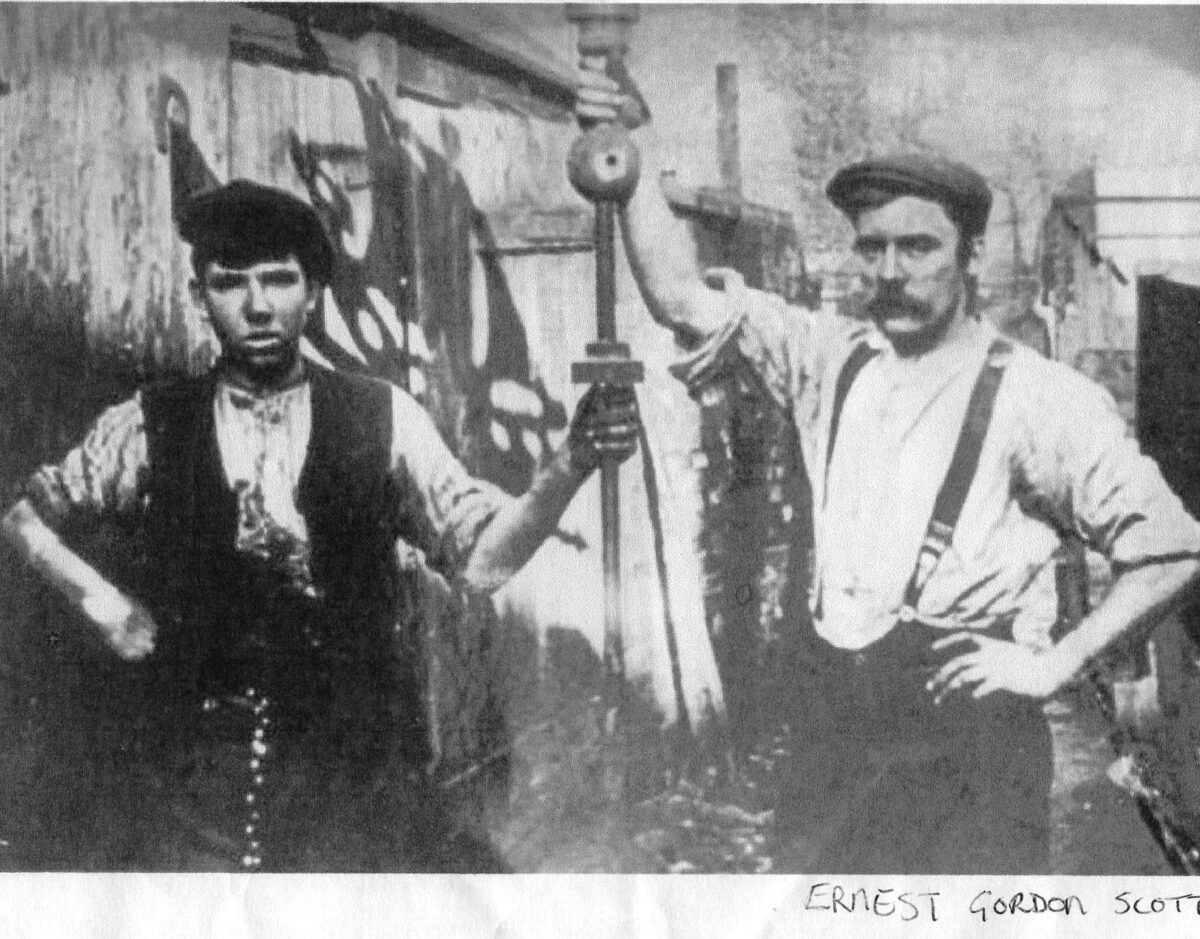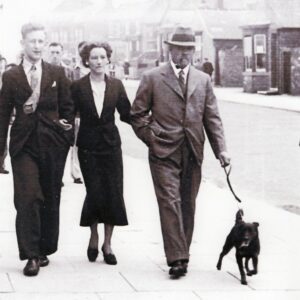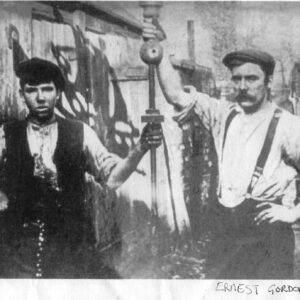Redcar has much history and that can be found in the stories behind the headstones. One such story relates to Ernest Gordon Scott. He was born in 1881 and baptised in Stokesley where his mother Elizabeth nee Gordon and father Henry Scott was a butcher in the west end of the village.
He was one of 6 brothers and a sister.
He moved to Redcar and became a blacksmith and farrier and lived at 90 Lord Street. He married Mary Ann Caton in 1911, her father Thomas Ainsworth was a sea captain. They went on to have two daughters, Kathleen and Mary both became school teachers.
The inscription on the headstone reads ‘In loving memory of our dear parents Mary Ann Scott died 15.9.1943 aged 61 years and Ernest Scott died 4.5.1960 aged 79 years. Also Mary Gordon Scott their beloved daughter died 9.5.1976 aged 62 years.’ This headstone can be found in section N in the old cemetery. A large tree blew down in a gale a few years ago and the headstone spun out of the grave row. It has since been re set in its rightful place.
Ernest had the blacksmith shop on the corner of Red Lion Street and Lord Street.
During the first World War Ernest as a farrier was not in a protected occupation but he was given extra time at home before joining up in May 1916 as his work was vital to help farmers and men who delivered food and fuel by ensuring the health of horses by attending to their feet. Growing food was a top priority in the First World War.
Local history books often feature the memorial town clock at Redcar but little about the weather vane. Ernest made this vane which was secured above the clock in the High Street. He also made the railings around the clock.
If you look closely at the image below you will see a silhouette which appears on the wall. This is the actual weather vane featuring a sailing ship that stands proudly on top of the clock tower. Ernest was working with his apprentice Charlie Barker. He also made the clapper links for the lifeboat wheels and it is thought that he was the first smithy in Redcar to use oxy-acetylene welding. The other image is of Ernest and his family with their little dog walking on the Esplanade. However his first love and main job was with horses. He bought a double plot at the back of the cemetery so that he would be able to hear the horse’s hooves on race day.


